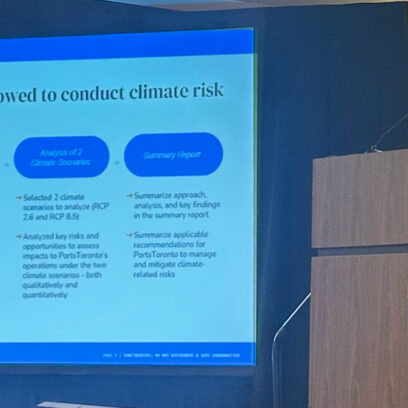Engaging with Employees & Stakeholders in Sustainability


Fierce Whiskers Launches World’s First Carbon-Negative Bourbon
The Austin distillery is releasing 257 carbon-negative bottles from Barrel #47 in a limited release.
Every stakeholder has a role to play within an organization to drive meaningful change and to reduce a company’s environmental impact.
In a previous post, we mapped out the integral roles each department plays in a company’s sustainability journey. But understanding these roles is just the starting point. The challenge lies in mobilizing this knowledge into actionable steps. A recent study indicated “74% of employees said their job is more fulfilling when they’re given the chance to make a positive impact on social and environmental issues, with 70% indicating they’d be more loyal to a company that helps them contribute to solutions to these issues (source).” This guide aims to bridge that gap, offering practical methods to ensure every corner of your organization is not only informed but also actively participating in sustainability initiatives, driving both sustainability progress and employee engagement and loyalty. With CarbonBetter’s resources at your disposal, the path to comprehensive sustainability becomes clearer.
Steps to Engage with Employees & Stakeholders
A lone department or a handful of champions cannot drive sustainability on their own. If you have or are looking to build an in-house sustainability committee, it’s vital to embed a company-wide culture where every employee sees themselves as a stakeholder. This often starts with the following:
1. Awareness & Training
- Building a Supportive Culture: Start by organizing seminars, workshops, or lunch-and-learns to educate departments about your business’ commitment to sustainability. Emphasize how it aligns with company values, benefits the environment, and is a regulatory and/or stakeholder expectation. Through these open discussions, businesses can foster a culture where talking about sustainability becomes a daily practice and constant consideration for new business opportunities and day-to-day operations.
- Specialized Training and Dedicated Learning Budgets: Provide specific training for personnel who will directly engage in data collection or reporting.
- Creating Green Policies: A clear and actionable environmental policy provides a roadmap for all employees, guiding decisions across departments. Supplemental policies that support the environmental policy, such as energy reduction policies and electronic waste management policies can also be helpful in providing employees with guidance on how best to align actions with the overall environmental policy.
2. Define Clear Roles & Responsibilities
- Departmental Liaisons: Designate or hire individuals within departments to take direct responsibility for gathering, validating, and communicating sustainability initiatives.
- Cross-Functional Team: Form a central team or committee that includes representatives from each department. This team can coordinate efforts, provide clarity, and communicate consistent information across the organization.
- Task Ownership: Ensure clarity around who owns specific sustainability tasks, especially in cases where the task owner’s primary job function is not sustainability. For example, if your procurement lead is responsible for rolling out a supplier checklist to gather sustainability data from suppliers, ensure this expectation is clearly communicated and that the team member is appropriately recognized for supporting this effort.
3. Data Collection & Management
- Identify Data Sources: Determine where your sustainability data will come from within your organization and ensure individuals are designated to take responsibility for gathering the data in the desired formats. For example, production and process data may come from your operations group, purchase data on supplies or ingredients may come from procurement, electricity bill data could come from finance.
- Data Collection Tools: Form a central team or committee that includes representatives from each department. This team can coordinate efforts, provide clarity, and communicate consistent information across the organization. If you have not done an initial baseline of your carbon, water, and waste impacts, it may be helpful to have an external consultant guide you through identifying data needs and building the appropriate tools.
- Regular Updates: Form a central team or committee that includes representatives from each department. This team can coordinate efforts, provide clarity, and communicate consistent information across the organization.
4. Timing & Resource Planning
- Set Milestones: Given the cyclical nature of sustainability reporting, set clear milestones throughout the year. This helps departments pace their efforts and prioritize tasks. Even if you report on an annual basis, it can be helpful to proactively gather data monthly or quarterly to ensure there is no missing data or scramble to find things at year end.
- Allocate Resources: Ensure departments have the necessary resources, tools, and budgetary allocations to handle the added responsibilities. This might involve reallocating resources or seeking additional ones.
- External Audits: If third-party verification or auditing is a part of the process, schedule these well in advance to allow departments to prepare.
“74% [of employees] say their job is more fulfilling when they are provided opportunities to make a positive impact at work.”
According to the results of the 2016 Cone Communications Employee Engagement Study

FW Sustainability Report
Learn more about how Fierce Whiskers has made sustainable choices every step of the way by downloading its full sustainability report.
5. Integrate with Existing Processes
- Process Integration: Instead of treating sustainability as an additional task, look for ways to integrate it into existing departmental processes. For instance, the procurement team can add carbon footprint considerations into vendor evaluations to aid in streamlining Scope 3 emissions calculations. Similarly, you may use software systems already for operations that are tracking things like energy and water consumption. Understanding existing tools and comparing those tools to your sustainability data needs is a valuable exercise in advance of evaluating or deploying any new tools or systems.
6. Communication Channels
- Regular Check-Ins: Organize routine meetings for representatives to discuss challenges, share insights, and report progress.
- Feedback Loop: Create a mechanism for departments to share feedback about the project or initiative, helping to refine and improve it over time. Incorporate and learn from negative feedback.
- Announcements: Things like the release of your annual sustainability report or the setting of a net-zero target and other milestones should be shared broadly with all stakeholders in the company.
7. Stay Updated
- Regulatory Changes: Sustainability regulations are fast-changing, so it is vital to ensure departments are updated about these changes and adapt accordingly. You can see our regulatory roadmap for US businesses here to inform planning here. Determine whether the responsibility for monitoring emerging regulations falls under your legal department or perhaps the environmental department—wherever it falls, it’s important that there is clear ownership from a team or individual for supporting your organization in evaluating and complying with emerging and evolving regulatory drivers. In some cases, you may rely on external stakeholders for this support such as consultants.
8. Celebrate & Recognize
- Share Accomplishments: Sustainability initiatives can feel like a marathon. Recognize the stakeholders and teams that are driving this forward, and where needed, acknowledge the fact that this process will be messy.
Public commitments, regulatory drivers, environmental policies and environmental, social and governance (ESG) reporting means that ESG and sustainability can no longer be an afterthought, or something that is considered once or twice a year and forgotten about. If your organization has made a public commitment to reducing its carbon emissions, it is vital to back up all claims with specific, measurable, achievable, and time-bound targets to mitigate the risk of unintentional greenwashing.
Conclusion
Every employee, regardless of their role, has the potential to be a catalyst for sustainability within an organization. The challenge lies in harnessing this potential and channeling it towards a unified goal. By integrating sustainability into every facet of business operations, we not only address the pressing environmental challenges but also position our businesses for long-term success and resilience. To discover how CarbonBetter can assist your organization in fostering a culture of sustainability and ensuring actionable, measurable results, contact us today.
Key sustainability stakeholders can be identified by mapping out departments and roles that have a direct or indirect impact on sustainability initiatives. This includes leadership, operations, procurement, finance, and even external partners. Regular surveys and feedback sessions can also help in pinpointing individuals or teams passionate about sustainability.
Open forums, workshops, and regular check-ins are effective. Tailored communication, highlighting the benefits of sustainability to each stakeholder's role, and celebrating small wins can also drive engagement.
It's essential to understand the root of the resistance. Providing education on the importance of sustainability, showcasing success stories, and demonstrating the business and ethical value can help in gaining buy-in. Regular feedback loops and addressing concerns directly can also mitigate resistance.
Regular surveys, feedback sessions, and tracking participation in sustainability initiatives can provide insights. Additionally, monitoring sustainability KPIs and correlating them with stakeholder engagement activities can offer a measure of effectiveness.
Continuous engagement can be fostered by regularly updating stakeholders on progress, celebrating milestones achieved, and involving them in the goal-setting process. It's also beneficial to provide ongoing training and resources, ensuring that stakeholders feel equipped and empowered to contribute to evolving sustainability objectives. Contact us today to learn more.


